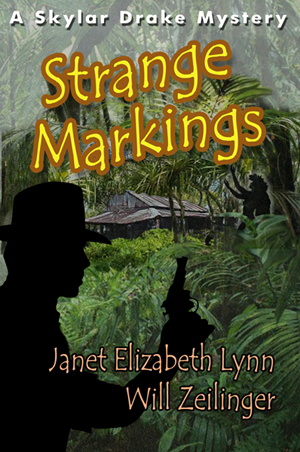Getting in Touch with the Right Side of my Brain by Peter J Barbour
July 13, 2022 by Bethlehem Writers Group in category From a Cabin in the Woods by Members of Bethlehem Writers Group tagged as creativity, innovation, muse, neurologist, Peter Barbour
Betty Edwards’ book, “Drawing on the Right Side of the Brain (1),” opened my eyes to a reality I hadn’t fully appreciated. As a neurologist, I understand the functions assigned to various locations within the brain. However, I never completely respected the dominant hemisphere’s power. Most people are right-handed indicating the left half of the brain is their dominant hemisphere, the center for logic and language. If I let it, my dominant hemisphere rules, governing by talking constantly and ruminating, at times, keeping me up at night reviewing, reminding, advising, revising, and creating anxiety. It can be unrelenting and exhausting.
Pop culture has long espoused that the right, non-dominant, hemisphere, in right-handed people, is the center of creativity. However, functional anatomic studies have not proven that hypothesis; and, in general, the concept of strict lateralization of creativity to the right side of the brain is no longer accepted. Nevertheless, that historic, theoretic construct remains useful for this discussion. (2)
What happened to the right half of the brain or wherever innovation resides? According to Betty Edwards, the education system took care of that by heavily favoring a curriculum of dominant hemisphere activities with emphasis on communicating through reading, writing, speaking, and exercising logic. The dominant side of the brain perceives the parts of things and processes in a linear sequential fashion. On the other hand, the innovative centers tend to be more spontaneous and conscious of the whole.
Right brain development became stunted halfway through elementary school. Betty Edwards points out, if one tries to sketch a picture of something, for many of us whose left-brain dominates, the depiction looks primitive, like something created in fourth grade. Try to draw anything and the left brain won’t allow it. Instead, it names the thing, consciously or unconsciously, and the right hand obeys producing a stereotypical likeness of the object rather than the article observed. The dominant hemisphere takes over limiting creativity.
How can I shut down my left hemisphere, let the right-side shine, and escape the constant banter interfering with sleep and relaxation, and stifling inventiveness? What happens when I finally break away, escaping the left hemisphere’s tyranny. I find quiet and peace. Time flies.
Meditation is one way to achieve this. I turn off the voice, listen to my surroundings, concentrate on breathing. Who knows, if I focus on nothingness long enough, someone wiser than I once suggested, I may hear the angels whispering. Our North American culture doesn’t generally allow for guiltless free unproductive time, making meditation difficult.
I’ve discovered other activities with the hope of reaching the same end. My answer to that conundrum involves incorporating a constructive activity with the mediative practice. I stand in a stream with water rushing past me. An egret walks slowly on the opposite shore staring in my direction. I cast and retrieve a feather tied to a hook at the end of a long line, concentrate on the process, commune with nature. I may even catch a fish. I play a musical instrument, doesn’t matter how well. Music is about spatial relationships, a non-dominant hemisphere specialty. I paint a picture and become a part of the scene, lost in the color, and the lines. I walk among the flowers on the canvas, smell their fragrance, feel the breeze ruffling the leaves. Free the right hemisphere. Time flies.
That brings me to writing/composing. Harness the left brain. Creating fiction is like painting. My pallet is filled with words. I paint with them, craft images, dissolve into the story, live the mystery, fly among the stars to strange worlds, survive a dystopia, fall in love, reminisce, dream, get lost, find my way, escape into a world I create.
1. Drawing on the Right Side of the Brain, Betty Edwards, 1979, Simon and Shuster.
2. Robert Schmerling, Harvard Health Publishing

Peter Barbour has been writing for over thirty years. He published “Loose Ends,” a memoir, in 1987, followed by a series of short stories from 1992 to 1995. “The Fate of Dicky Paponovitch” won Raconteur of the Month, May 1994, Raconteur Magazine, Susan Carrol Publishing. Since 2015, he has published more than twenty-five short stories which have appeared in shortbreadstories.co.uk, storystar.com, and shortstory.me, The Piker Press, Rue Scribe, Star Light Path, and ArtPost Magazine. His short story, “Why Bats Live in Caves,” can be found in “Fur, Feathers, and Scales: Sweet, Funny, and Strange Animal Tales,” an anthology from the Bethlehem Writers Group. Barbour wrote and illustrated three children’s books, “Gus at Work,” “Oscar and Gus,” and “Tanya and the Baby Elephant.” He is a member of the Bethlehem Writers Group. Links to his stories and illustrations can be found at www.PeteBarbour.com Barbour enjoys deconstructing stories to see how they are put together. He grew up loving the Wizard of Oz series, and dutifully read each book in the series to his children. The hero goes on a journey is one of his favorite themes.
He loves the outdoors, and especially the Pacific Northwest, which serves as the setting for many of his stories. He is married, and likes to travel, which affords him the opportunity to absorb new experiences from which to write. Barbour attended the University of Pennsylvania as an undergraduate and Temple University School of Medicine where he earned his M.D. He completed his residency training in Neurology, at Stanford University School of Medicine and practiced medicine in the Lehigh Valley until 2015 when he retired.
He believes that what comes from the heart goes to the heart.
Pete’s Books

Peter Barbour has been writing for over thirty years. He published “Loose Ends,” a memoir, in 1987, followed by a series of short stories from 1992 to 1995. “The Fate of Dicky Paponovitch” won Raconteur of the Month, May 1994, Raconteur Magazine, Susan Carrol Publishing. Since 2015, he has published more than twenty-five short stories which have appeared in shortbreadstories.co.uk, storystar.com, and shortstory.me, The Piker Press, Rue Scribe, Star Light Path, and ArtPost Magazine. His short story, “Why Bats Live in Caves,” can be found in “Fur, Feathers, and Scales: Sweet, Funny, and Strange Animal Tales,” an anthology from the Bethlehem Writers Group. Barbour wrote and illustrated three children’s books, “Gus at Work,” “Oscar and Gus,” and “Tanya and the Baby Elephant.” He is a member of the Bethlehem Writers Group. Links to his stories and illustrations can be found at www.PeteBarbour.com Barbour enjoys deconstructing stories to see how they are put together. He grew up loving the Wizard of Oz series, and dutifully read each book in the series to his children. The hero goes on a journey is one of his favorite themes.
He loves the outdoors, and especially the Pacific Northwest, which serves as the setting for many of his stories. He is married, and likes to travel, which affords him the opportunity to absorb new experiences from which to write. Barbour attended the University of Pennsylvania as an undergraduate and Temple University School of Medicine where he earned his M.D. He completed his residency training in Neurology, at Stanford University School of Medicine and practiced medicine in the Lehigh Valley until 2015 when he retired.
He believes that what comes from the heart goes to the heart.
Books from Bethlehem Writers Group, LLC
1 1 Read more
Affiliate Links
A Slice of Orange is an affiliate with some of the booksellers listed on this website, including Barnes & Nobel, Books A Million, iBooks, Kobo, and Smashwords. This means A Slice of Orange may earn a small advertising fee from sales made through the links used on this website. There are reminders of these affiliate links on the pages for individual books.
Search A Slice of Orange
Find a Column
Archives
Featured Books
STARTING OVER WITH THE SHERIFF
Starting anew? But what if he learns the truth?
More info →DEW UPON GLASS
After everything they have gone through. Why now? Why this?
ROT & RUIN
In the zombie-infested, post-apocalyptic America where Benny Imura lives, every teenager must find a job by the time they turn fifteen . . .
More info →STRANGE MARKINGS
The Pacific breezes blow many things in from the ocean, this time its power, greed, and murder.
More info →Newsletter
Contributing Authors
Search A Slice of Orange
Find a Column
Archives
Authors in the Bookstore
- A. E. Decker
- A. J. Scudiere
- A.J. Sidransky
- Abby Collette
- Alanna Lucus
- Albert Marrin
- Alice Duncan
- Alina K. Field
- Alison Green Myers
- Andi Lawrencovna
- Andrew C Raiford
- Angela Pryce
- Aviva Vaughn
- Barbara Ankrum
- Bethlehem Writers Group, LLC
- Carol L. Wright
- Celeste Barclay
- Christina Alexandra
- Christopher D. Ochs
- Claire Davon
- Claire Naden
- Courtnee Turner Hoyle
- Courtney Annicchiarico
- D. Lieber
- Daniel V. Meier Jr.
- Debra Dixon
- Debra H. Goldstein
- Debra Holland
- Dee Ann Palmer
- Denise M. Colby
- Diane Benefiel
- Diane Sismour
- Dianna Sinovic
- DT Krippene
- E.B. Dawson
- Emilie Dallaire
- Emily Brightwell
- Emily PW Murphy
- Fae Rowen
- Faith L. Justice
- Frances Amati
- Geralyn Corcillo
- Glynnis Campbell
- Greg Jolley
- H. O. Charles
- Jaclyn Roché
- Jacqueline Diamond
- Janet Lynn and Will Zeilinger
- Jeff Baird
- Jenna Barwin
- Jenne Kern
- Jennifer D. Bokal
- Jennifer Lyon
- Jerome W. McFadden
- Jill Piscitello
- Jina Bacarr
- Jo A. Hiestand
- Jodi Bogert
- Jolina Petersheim
- Jonathan Maberry
- Joy Allyson
- Judy Duarte
- Justin Murphy
- Justine Davis
- Kat Martin
- Kidd Wadsworth
- Kitty Bucholtz
- Kristy Tate
- Larry Deibert
- Larry Hamilton
- Laura Drake
- Laurie Stevens
- Leslie Knowles
- Li-Ying Lundquist
- Linda Carroll-Bradd
- Linda Lappin
- Linda McLaughlin
- Linda O. Johnston
- Lisa Preston
- Lolo Paige
- Loran Holt
- Lyssa Kay Adams
- Madeline Ash
- Margarita Engle
- Marguerite Quantaine
- Marianne H. Donley
- Mary Castillo
- Maureen Klovers
- Megan Haskell
- Melanie Waterbury
- Melissa Chambers
- Melodie Winawer
- Meriam Wilhelm
- Mikel J. Wilson
- Mindy Neff
- Monica McCabe
- Nancy Brashear
- Neetu Malik
- Nikki Prince
- Once Upon Anthologies
- Paula Gail Benson
- Penny Reid
- Peter Barbour
- Priscilla Oliveras
- R. H. Kohno
- Rachel Hailey
- Ralph Hieb
- Ramcy Diek
- Ransom Stephens
- Rebecca Forster
- Renae Wrich
- Roxy Matthews
- Ryder Hunte Clancy
- Sally Paradysz
- Simone de Muñoz
- Sophie Barnes
- Susan Squires
- T. D. Fox
- Tara C. Allred
- Tara Lain
- Tari Lynn Jewett
- Terri Osburn
- Tracy Reed
- Vera Jane Cook
- Vicki Crum
- Writing Something Romantic
Affiliate Links
A Slice of Orange is an affiliate with some of the booksellers listed on this website, including Barnes & Nobel, Books A Million, iBooks, Kobo, and Smashwords. This means A Slice of Orange may earn a small advertising fee from sales made through the links used on this website. There are reminders of these affiliate links on the pages for individual books.






























































